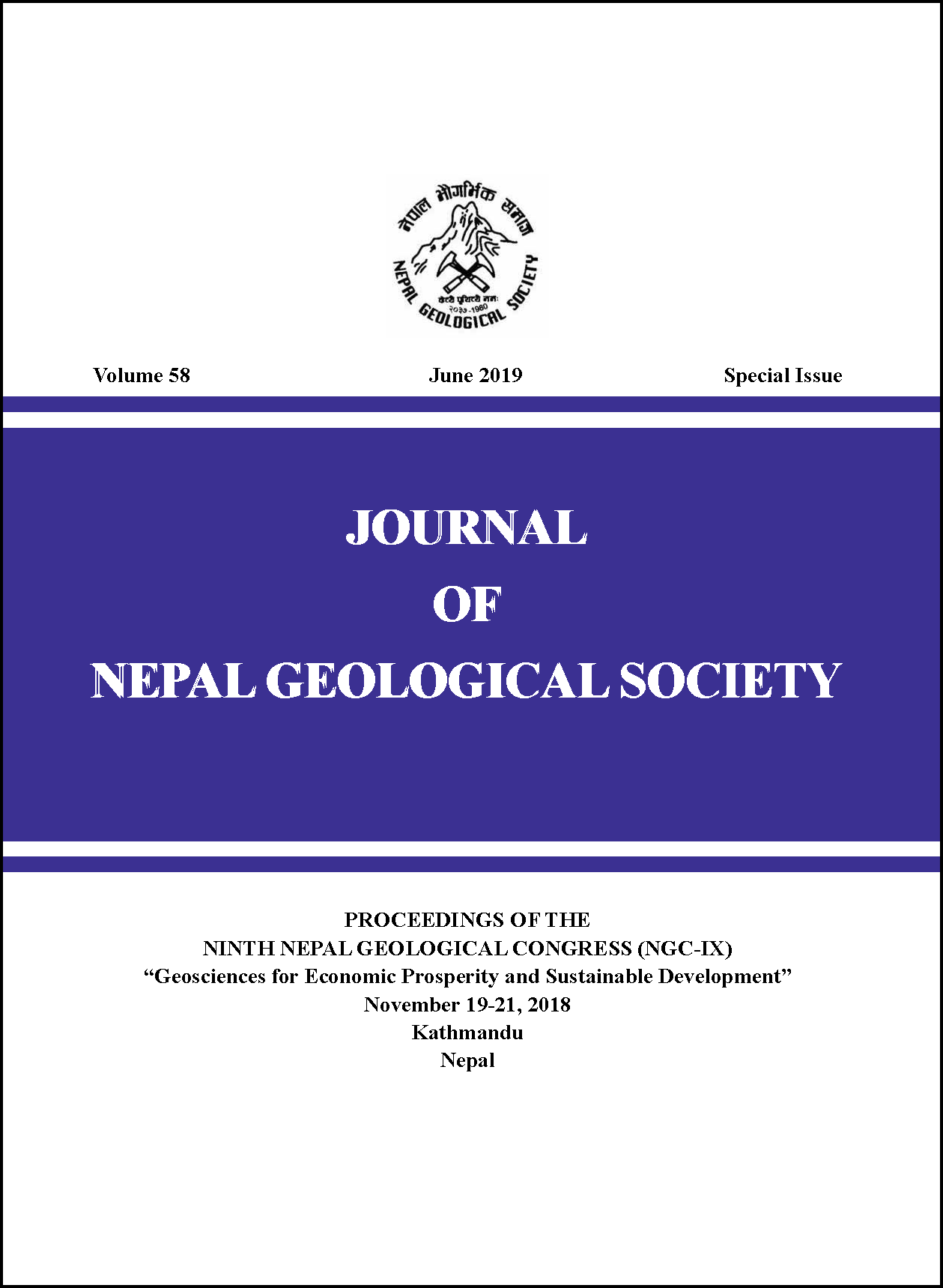An approach of preparing earthquake induced landslide hazard map: a case study of Nuwakot District, central Nepal
DOI:
https://doi.org/10.3126/jngs.v58i0.24600Keywords:
Hazard map, Nuwakot District, Quantification theory II, JICA methodologyAbstract
The Gorkha Earthquake-2015 triggered landslides which are widespread in central Nepal. The landslides swept away physical infrastructures like roads, schools, public and residential buildings, and cultivated lands at several locations. This indicated that the decision makers were not aware of the fact that the locations for possible earthquake-induced landslides can be predicted, and physical infrastructure development can be planned accordingly. What is needed for the purpose is an earthquake-induced landslide hazard map which is a useful tool in decision making, particularly for finding safer geographical locations for residential and public building construction, and also for other physical infrastructure development. Immediately after the Gorkha Earthquake-2015, JICA prepared an earthquake-induced landslide hazard map of the Gorkha and the Sindhupalchowak Districts using a certain methodology. But there remains a research question regarding whether the same methodology can be applied in preparing earthquake-induced landslide hazard maps of other earthquake-affected districts located away from the epicenter area. The main purpose of this research was to apply the JICA methodology to prepare an earthquake-induced landslide hazard map of the Nuwakot District, central Nepal which is the one if the most affected district by Gorkha earthquake 2015. The second purpose was to examine whether the map captured the ground reality or not. While preparing the input data required, four major disaster factors were taken into consideration which includes, among others, slope inclination, slope direction, relationship with the major thrust and distance from the epicenter. These factors were classified and characterized according to their nature and condition. The result was then analyzed by using quantification theory. An earthquake-induced landslide hazard map was then prepared using QGIS as a major software tool. The map was also verified through ground-truthing visiting several locations of the study site. The proposed methodology can be used to prepare similar maps in other affected districts of Gorkha earthquake 2015, and suitable sites for constructing physical infrastructures like roads, residential and public buildings can also be identified using the maps.
Downloads
Downloads
Published
How to Cite
Issue
Section
License
© Nepal Geological Society




